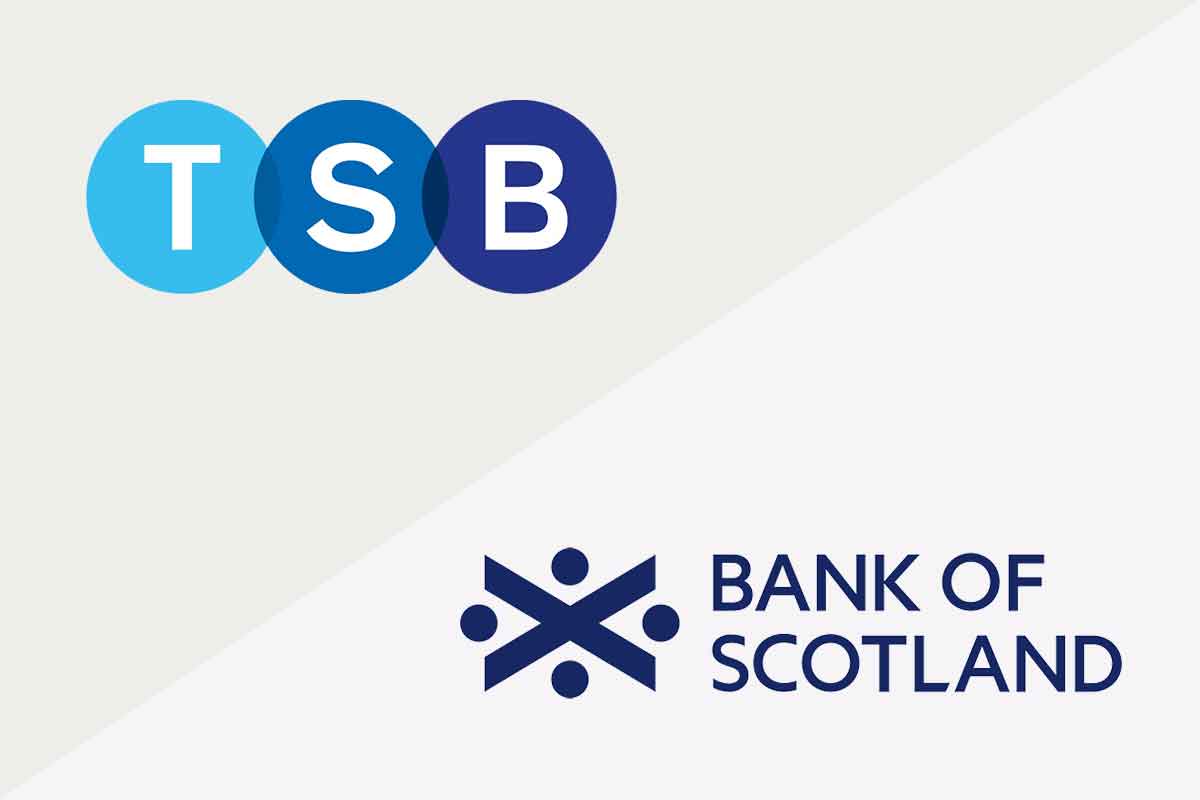Choosing the right bank for your business is a crucial decision that can significantly impact your financial operations and growth prospects. In the United Kingdom, TSB and Bank of Scotland are two prominent options for business banking services. To help you make an informed choice, we will compare TSB vs Bank of Scotland in terms of their pros, cons, key differences, costs, and other essential considerations.
TSB vs Bank of Scotland
| Features | TSB | Bank of Scotland |
|---|---|---|
| Local Focus | ✓ TSB prides itself on being a local bank with branches across the UK, providing a more personal touch and face-to-face interactions with customers. | ✓ Bank of Scotland has a wide network of branches throughout Scotland and the rest of the UK, offering localised support and accessibility. |
| Extensive Branch Network | ✗ TSB’s branch network is not as extensive as some other banks, which could be a drawback if in-person banking services are crucial for your business. | ✓ Bank of Scotland’s extensive branch network provides a convenient and accessible option for businesses that prefer face-to-face interactions or require local support. |
| International Services | ✗ TSB’s focus is primarily on the UK market, and its international services may be more limited compared to some other banks. | ✓ Bank of Scotland, as part of the Lloyds Banking Group, offers comprehensive international banking services, including foreign currency accounts, trade finance, and expert guidance for businesses engaged in global markets. |
| Business Support | ✓ TSB offers various resources and support for small businesses, including guidance on business planning, access to loans and credit facilities, and specialised business accounts. | ✓ Bank of Scotland provides tailored business support, such as relationship managers, industry expertise, and guidance on financial solutions to help businesses thrive. |
| Online Banking Platform | ✓ TSB provides a user-friendly online banking platform, enabling businesses to conveniently manage their finances from anywhere, with features like real-time transaction monitoring and easy payment processing. | ✓ Bank of Scotland offers a robust online banking platform that allows businesses to access and manage their accounts, make transactions, and utilise a range of digital tools and services. |
| Account Fees | Varies (Depends on account type and services) | Varies (Depends on account type and services) |
| International Fees | Varies (Depends on services and transactions) | Varies (Depends on services and transactions) |
| Customer Service | ✗ TSB’s customer service ratings are based on customer reviews and experiences, which can vary. | ✓ Bank of Scotland aims to provide quality customer service and has established customer support channels, including helplines, online assistance, and dedicated business support teams. |
Remember that the information provided in the table is a general overview, and it’s important to consult the official websites or contact the respective banks directly for the most up-to-date and accurate information regarding specific account features, fees, and services.
Featured pro tools
Statistics
TSB:
- As of 2021, TSB had over 500 branches across the UK, providing localised support and access to in-person banking services for businesses.
- TSB reported a customer base of around 5 million customers, including both personal and business banking clients.
- In a survey conducted by the Competition and Markets Authority (CMA) in 2020, TSB received a customer satisfaction score of 63% for its business banking services.
Bank of Scotland:
- Bank of Scotland, as part of the Lloyds Banking Group, has a network of over 600 branches across the UK, providing businesses with extensive access to face-to-face banking services.
- Bank of Scotland reported having over 2.8 million personal and business customers as of 2021.
- According to a survey by the Competition and Markets Authority (CMA) in 2020, Bank of Scotland received a customer satisfaction score of 62% for its business banking services.
Pros of TSB
- Local focus: TSB prides itself on being a local bank, with branches across the UK. This can be advantageous if you prefer a more personal touch and value face-to-face interactions with your banking provider.
- Business support: TSB offers various resources and support for small businesses, including guidance on business planning, access to loans and credit facilities, and specialised business accounts.
- Digital banking: TSB provides a user-friendly online banking platform, enabling businesses to manage their finances conveniently from anywhere, anytime. The platform offers features like real-time transaction monitoring and easy payment processing.
Cons of TSB
- Limited branch network: While TSB has a significant presence across the UK, its branch network is not as extensive as some other banks. This might be a drawback if you rely heavily on in-person banking services.
- Limited international services: TSB’s focus is primarily on the UK market, so if your business involves frequent international transactions or requires specialised international services, you may find TSB’s offerings somewhat limited.
Pros of Bank of Scotland
- Strong brand and history: Bank of Scotland has a long-standing reputation as a reliable and trusted banking institution. Its heritage and extensive experience can instill confidence in businesses seeking a stable banking partner.
- Extensive branch network: Bank of Scotland has a wide network of branches throughout Scotland and the rest of the UK. This can be advantageous if you prefer face-to-face interactions or require local support.
- International services: Bank of Scotland, being part of the Lloyds Banking Group, offers comprehensive international banking services, including foreign currency accounts, trade finance, and expert guidance for businesses engaged in global markets.
Cons of Bank of Scotland
- Limited local focus: Although Bank of Scotland has branches across the UK, its Scottish heritage might make it a less attractive choice for businesses based outside of Scotland. It may lack the hyperlocal focus that some businesses seek.
- Potentially higher costs: Compared to some other banks, Bank of Scotland’s fees and charges may be slightly higher, especially for certain services like international transactions or cash handling.
TSB vs Bank of Scotland – Key differences
Ownership and structure
TSB is an independent bank, while Bank of Scotland is part of the Lloyds Banking Group. TSB’s independence allows it to have a distinct focus and decision-making autonomy.
On the other hand, Bank of Scotland, as part of a larger banking group, can leverage the resources, expertise, and wider range of services offered by the group.
Business account features
Both TSB and Bank of Scotland offer a range of business account options, but the specific features, benefits, and pricing may vary.
It is important to compare the account types available from each bank, including the transaction limits, access to credit facilities, online banking features, and additional services like merchant services or cash handling.
Local vs regional focus
TSB prides itself on being a local bank with branches spread across the UK, which can be appealing for businesses seeking a more personal touch and localised support.
Bank of Scotland, while also having a presence across the UK, has a stronger regional focus on Scotland.
This can make Bank of Scotland a preferred choice for businesses based in Scotland or those looking for specialised support and expertise in the region.
International services
Bank of Scotland, being part of the Lloyds Banking Group, offers comprehensive international banking services to businesses engaged in global markets. This includes foreign currency accounts, trade finance solutions, and expert guidance on international transactions.
TSB’s international services may be more limited compared to Bank of Scotland, as TSB’s primary focus is on the UK market.
Brand reputation and history
Bank of Scotland has a long-standing reputation as a trusted banking institution with a rich history. Its strong brand presence and extensive experience in the market can instill confidence in businesses seeking a stable banking partner.
TSB, as a newer independent bank, may have a different brand perception and a more contemporary approach to banking.
TSB vs Bank of Scotland – Costs fees
The costs associated with business banking can vary depending on the size and nature of your business, transaction volumes, and specific requirements.
The fees and pricing structures of TSB and Bank of Scotland can vary depending on the specific account type and services utilised.
It is advisable to review and compare the fee schedules, including account maintenance fees, transaction charges, overdraft fees, and any additional service fees that may apply.
Consider your business’s anticipated transaction volumes and requirements to assess which bank offers the most cost-effective solution.
TSB vs Bank of Scotland – Verdict
Choosing between TSB vs Bank of Scotland for business banking requires a thorough assessment of your unique business needs, priorities, and preferences.
While TSB offers a more local focus and business support, Bank of Scotland brings a strong brand and extensive branch network with a broader range of international services.
If your business operates primarily within the UK and values a local touch, TSB may be a suitable choice. Their commitment to supporting small businesses and user-friendly digital banking platform can be advantageous.
However, the limited branch network and potentially restricted international services should be considered if your business has global aspirations or requires specialised international banking solutions.
On the other hand, Bank of Scotland’s strong brand reputation, extensive branch network, and comprehensive international services make it an attractive option for businesses with diverse needs.
If your business operates internationally or requires specific international banking capabilities, Bank of Scotland’s affiliation with the Lloyds Banking Group can provide access to a wider range of resources and expertise.
However, it is worth noting that Bank of Scotland’s focus on Scotland may make it a less appealing choice for businesses based outside of Scotland seeking hyperlocal support.
TSB vs Bank of Scotland – FAQ
Both TSB and Bank of Scotland typically require businesses to have a registered address in the UK to open an account. If your business operates outside the UK, it is advisable to check with the banks directly to understand their specific requirements and any potential limitations.
Yes, both TSB and Bank of Scotland offer a range of business loans and credit facilities tailored to meet the financing needs of businesses. These may include overdrafts, business credit cards, asset finance, and term loans. It is recommended to explore the specific offerings and eligibility criteria of each bank to determine which suits your business requirements.
While TSB offers some international services, its focus is primarily on the UK market. If your business involves frequent international transactions or requires specialised international banking solutions, Bank of Scotland, with its affiliation with the Lloyds Banking Group, may provide more comprehensive international services.
Both TSB and Bank of Scotland provide user-friendly online banking platforms that enable businesses to manage their finances conveniently. These platforms typically offer features such as real-time transaction monitoring, fund transfers, payment processing, account statements, and access to other digital banking tools. It is advisable to explore their respective online banking platforms to understand the specific features and functionalities available.
TSB and Bank of Scotland provide various customer support channels for businesses. TSB’s customer support can be reached through their helpline, online chat, or by visiting a branch. Bank of Scotland offers helplines, online assistance, and dedicated business support teams. Refer to their official websites or contact their customer service directly to access the most up-to-date contact information.
Remember, it is essential to consult the banks directly or refer to their official websites for the most accurate and detailed information regarding specific account features, services, eligibility criteria, and contact details.

